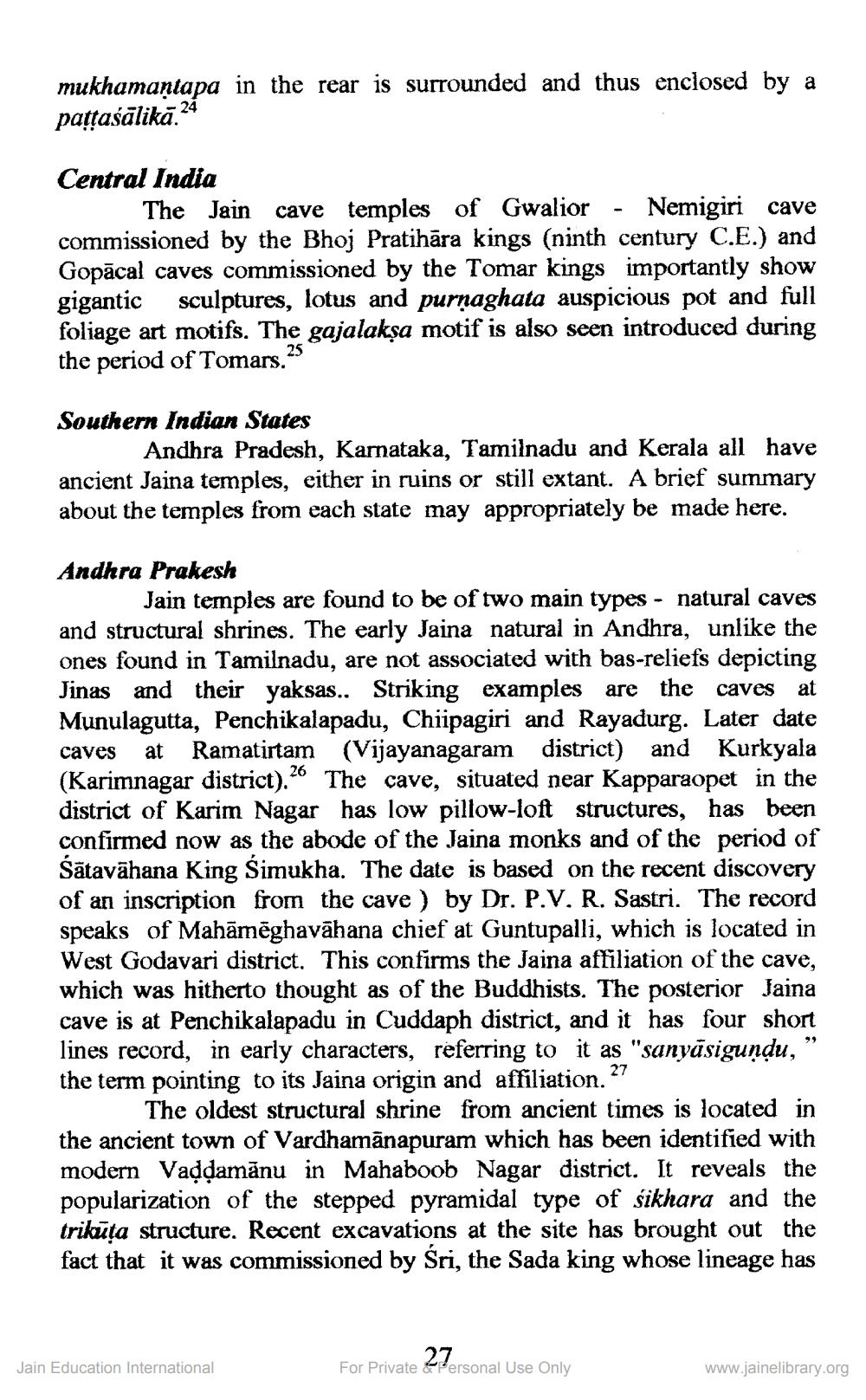________________
mukhamantapa in the rear is surrounded and thus enclosed by a paṭṭaśālikā.2
24
Central India
The Jain cave temples of Gwalior Nemigiri cave commissioned by the Bhoj Pratihāra kings (ninth century C.E.) and Gopacal caves commissioned by the Tomar kings importantly show gigantic sculptures, lotus and purnaghata auspicious pot and full foliage art motifs. The gajalaksa motif is also seen introduced during the period of Tomars.25
Southern Indian States
Andhra Pradesh, Karnataka, Tamilnadu and Kerala all have ancient Jaina temples, either in ruins or still extant. A brief summary about the temples from each state may appropriately be made here.
Andhra Prakesh
Jain temples are found to be of two main types - natural caves and structural shrines. The early Jaina natural in Andhra, unlike the ones found in Tamilnadu, are not associated with bas-reliefs depicting Jinas and their yaksas.. Striking examples are the caves at Munulagutta, Penchikalapadu, Chiipagiri and Rayadurg. Later date caves at Ramatirtam (Vijayanagaram district) and Kurkyala (Karimnagar district)." The cave, situated near Kapparaopet in the district of Karim Nagar has low pillow-loft structures, has been confirmed now as the abode of the Jaina monks and of the period of Śātavāhana King Śimukha. The date is based on the recent discovery of an inscription from the cave) by Dr. P.V. R. Sastri. The record speaks of Mahāmēghavahana chief at Guntupalli, which is located in West Godavari district. This confirms the Jaina affiliation of the cave, which was hitherto thought as of the Buddhists. The posterior Jaina cave is at Penchikalapadu in Cuddaph district, and it has four short lines record, in early characters, referring to it as "sanyasigundu, the term pointing to its Jaina origin and affiliation. 27
The oldest structural shrine from ancient times is located in the ancient town of Vardhamanapuram which has been identified with modern Vaddamānu in Mahaboob Nagar district. It reveals the popularization of the stepped pyramidal type of sikhara and the trikūta structure. Recent excavations at the site has brought out the fact that it was commissioned by Śri, the Sada king whose lineage has
Jain Education International
26
27
For Private & Personal Use Only
www.jainelibrary.org




